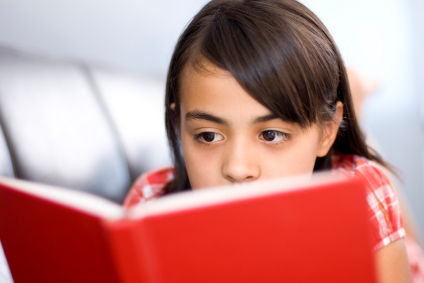 “The link between academic failure and delinquency, violence, and crime is welded to reading failure.” – Department of Justice statement following release of these illiteracy statistics from April 2013:
“The link between academic failure and delinquency, violence, and crime is welded to reading failure.” – Department of Justice statement following release of these illiteracy statistics from April 2013:
- Two-thirds of students who cannot read proficiently by the end of 4th grade will end up in jail or on welfare
- 85% of all juveniles who interface with the juvenile court system are functionally illiterate
- 70% of inmates in America’s prisons cannot read above 4th grade level
- 43% of adults at Level 1 literacy skills live in poverty compared to only 4% of those at Level 5
- 32 million American adults cannot read
- 21% of American adults who can read, cannot read above 5th grade level
- 19% of high school graduates cannot read
- 1 child in 4 will grow up in the United States without being able to read
As a society, we CANNOT allow these statistics to go unheeded. As parents, we MUST NOT allow our child to become the one who cannot read age appropriately. Yet how common is it for children to choose video games, cell texting, or social media chatting over reading a book with real words… spelled out… in stories that quicken their hearts and challenge their imaginations? How frequently do we ignore their lack of book reading without any regard to the consequences?
Reading requires children to accurately use all of their visual, language, phonetic and decoding skills to successfully recognize and understand written words. There are many reasons why 1 out of every 4 children cannot do that, but vision deficiencies are a major source.
You must utilize 17 visual skills for optimal reading performance. These include focusing, eye tracking, teamwork or aiming the eyes together, and visual perception (the ability to interpret, analyze and comprehend what is being read.) Seeing the blackboard from 20 feet away (20/20 distance vision) is just one of the 17 skills, but normally the only one tested for in a basic school screening. Eye doctors check the general ability to see near and far, as well as for eye disease. A behavioral optometrist is trained to give a thorough assessment of all 17 skills needed for near (reading) vision, as well as distance vision.
If you have a child who doesn’t read, confesses to dislike reading, suffers from headaches or fatigue while reading, or struggles in school – the first step is a proper evaluation of ALL his reading skills.
Many vision problems can cause reading troubles, as well as misdiagnoses of ADHD, autism and learning disabilities. Some of the more common treatable vision diagnoses are:
- Convergence insufficiency or excess (inability to aim the eyes together to read)
- Spatial awareness issues (often misdiagnosed as dyslexia – letter and word reversals while reading)
- Amblyopia or lazy eye (one eye dominates and does most of the work, unknowingly weakening the other eye)
- Strabismus, wandering or crossed eyes (often unnoticeable to the naked eye, which send conflicting visual images to the brain)
After a diagnosis, vision therapy with a behavioral optometrist, in conjunction with light therapy, can improve these conditions, which will enhance and encourage reading performance. Both therapies are treatment programs which can be fun and entertaining for children, as well as challenging for adults.
Our children must not miss out on the joys of reading Dr. Seuss, The Wizard of Oz, Curious George, Little House on the Prairie, or the #1 selling book series of all-time Harry Potter. These books challenge their minds and imaginations, while increasing vocabulary and experiences, encouraging them to dream big and set lofty goals. By not reading with our child, we miss out on quality one-on-one time with them that can lift self-image and instill confidence. A love for reading, even as early as in the womb, sets the stage for who and what your child will become and how successful he will be in life.
Here are some internet links which list outstanding children’s books and promote reading as a healthy activity. Electronic media is popular today, but you can still find real books at your local library, bookstores and yard sales. Take an active role in encouraging your child to pick up a book and get started reading today. If he resists you repeatedly, it’s time to give us a call so that we can discover why!
http://www.qubo.com/tips-to-help-promote-a-love-of-reading
http://www.nea.org/grants/promote-reading-for-all-children.html
http://www.teachersfirst.com/100books.cfm
http://entertainment.howstuffworks.com/arts/literature/20-best-selling-childrens-books.htm#page=20
http://www.scholastic.com/teachers/article/teachers-picks-top-25-picture-books
Illiteracy statistics were found at:
http://www.huffingtonpost.com/2013/09/06/illiteracy-rate_n_3880355.html
http://www.statisticbrain.com/number-of-american-adults-who-cant-read/
http://www.begintoread.com/research/literacystatistics.html
“Goodnight stars… Goodnight air…Goodnight noises everywhere.” – from Goodnight Moon by Margaret Wise Brown